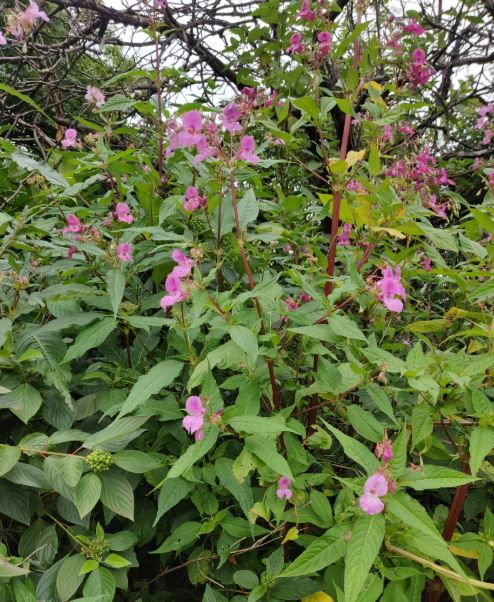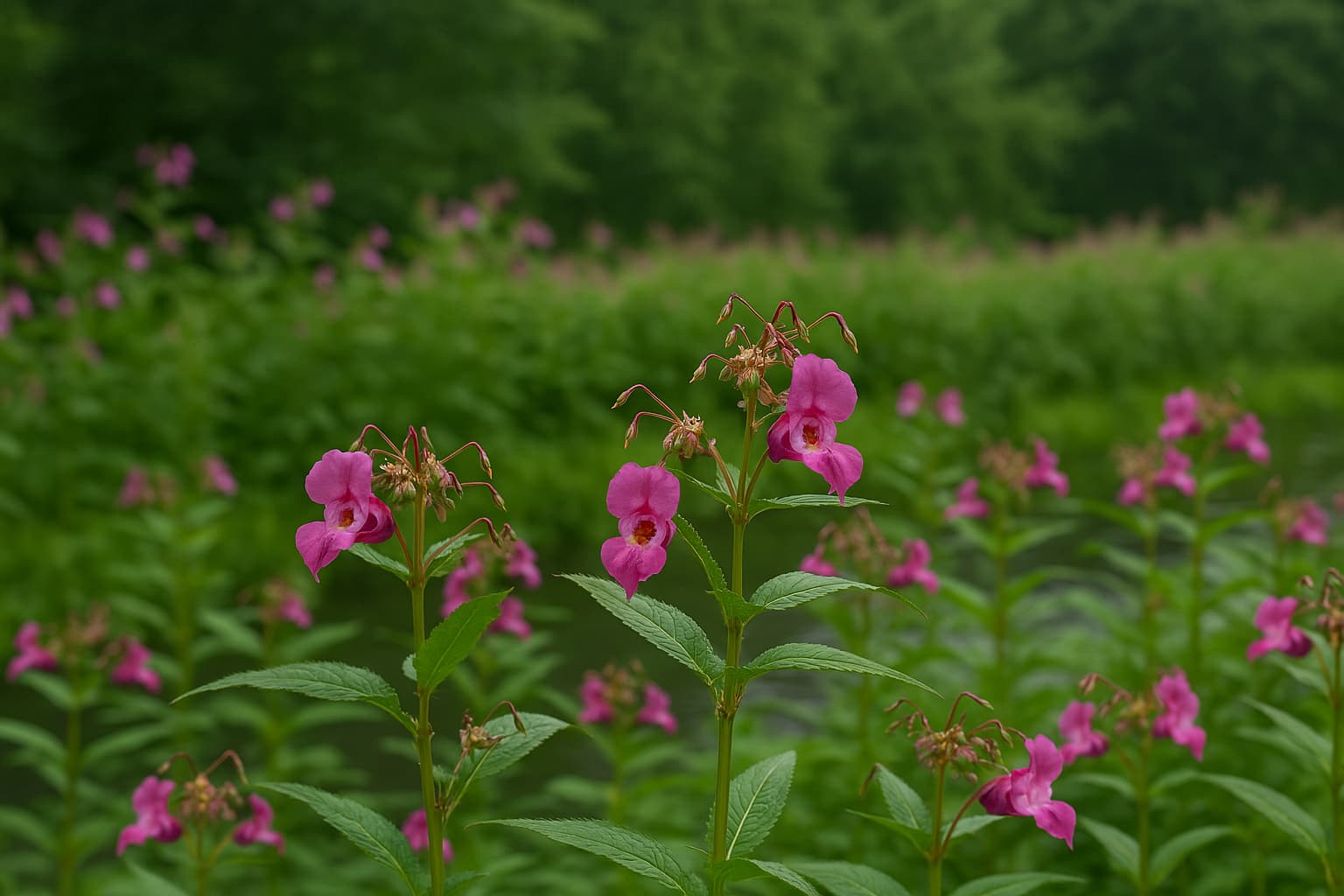The UK government has recently reclassified Himalayan balsam under new legislation, moving it from the Wildlife and Countryside Act 1981 to the Invasive Alien Species (Enforcement and Permitting) Order 2019 (commonly referred to as the Invasive Weed Act). This change is significant for landowners, conservationists, and businesses involved in invasive species control.
In this blog, we’ll explore what this legislative shift means, why it was necessary, and how it impacts those responsible for managing land in the UK.

Why the Change?
Himalayan balsam (Impatiens glandulifera) has long been recognised as an invasive species in the UK. Originally introduced in the 19th century as an ornamental plant, it has since spread aggressively along riverbanks, wetlands, and woodlands, outcompeting native flora and contributing to soil erosion.
Under the Wildlife and Countryside Act 1981, landowners were prohibited from planting or allowing the spread of Himalayan balsam into the wild. However, enforcement was limited, and the plant continued to spread unchecked.
By reclassifying Himalayan balsam under the Invasive Weed Act, the UK government has strengthened its stance, aligning its regulations with other high-risk invasive species. This shift enables tighter control measures, greater enforcement powers, and potentially harsher penalties for those failing to manage infestations.
What Does This Mean for Landowners and Businesses?
If you are responsible for land where Himalayan balsam is present, this change means:
- Increased Legal Responsibility – Landowners and businesses must take proactive measures to control and prevent the spread of Himalayan balsam. Negligence could now result in fines or legal action.
- Stricter Control Measures – The government may introduce compulsory eradication programs, requiring landowners to remove the plant using approved methods.
- Professional Management is Key – Given the tougher regulations, hiring a specialist invasive weed control company ensures compliance and effective removal. Simply cutting or pulling the plant may not be enough—professional methods such as herbicide treatment or biological control may be necessary.
How We Can Help
At Conservation Land Services, we specialise in the identification, treatment, and long-term management of invasive weeds like Himalayan balsam. Our environmentally responsible and legally compliant solutions ensure your land remains free from this destructive species while keeping you on the right side of the law.
📞 Need professional help? Contact us today for a free consultation!
This legislative shift marks a significant step in tackling one of the UK’s most problematic invasive plants. By taking action now, landowners can protect native biodiversity, prevent legal repercussions, and maintain healthy ecosystems.
Stay informed, stay compliant, and let’s work together to control Himalayan balsam before it spreads even further!
Resources
Invasive Non-Native (Alien) Plant Species: Rules in England and Wales: This official guidance outlines the restrictions and responsibilities regarding invasive plant species, including Himalayan balsam. Legislation.gov.uk+2GOV.UK+2GOV.UK+2
The Invasive Alien Species (Enforcement and Permitting) Order 2019: This legislation details the enforcement measures and permitting requirements for managing invasive alien species in the UK. https://www.legislation.gov.uk/uksi/2019/527/contents
Prevent the Spread of Harmful Invasive and Non-Native Plants: This resource provides practical advice on identifying, controlling, and disposing of invasive plants to prevent their spread. GOV.UK+3GOV.UK+3GOV.UK+3
Perplexity search results
https://www.perplexity.ai/search/himalayan-balsam-a-legislative-TU6rlvpESw2ZCMsxUrIY2Q
Answer
The UK government has recently reclassified Himalayan balsam under the Invasive Alien Species (Enforcement and Permitting) Order 2019, moving it from its previous listing under the Wildlife and Countryside Act 1981. This legislative shift has significant implications for landowners and the management of this invasive plant.
Key Changes in Legislation
- Stricter Controls: Under the new legislation, Himalayan balsam is now classified as an invasive alien species of concern. This means stricter measures are in place to prevent its introduction, spread, and management.
- Legal Liability: Landowners may now face increased legal responsibility if Himalayan balsam spreads from their property to neighboring land. This aligns with common law nuisance principles established in cases like Network Rail Infrastructure v Williams & Waistell4.
- Prohibition on Planting or Spreading: It remains illegal to plant or cause Himalayan balsam to grow in the wild. However, under the new classification, enforcement and penalties for non-compliance may be more robust26.
Implications for Landowners
- Management Obligations: While there is no legal requirement to eradicate Himalayan balsam from private land, landowners are encouraged to manage it effectively to prevent its spread. Failure to do so could result in liability if it encroaches onto neighboring properties46.
- Controlled Waste: Any removed plant material is considered controlled waste under the Environmental Protection Act 1991 and must be disposed of at licensed facilities3.
- Collaboration and Strategy: Effective management often requires a coordinated approach with neighboring landowners, particularly along riverbanks where seeds can easily spread downstream35.
Management Recommendations
- Early Removal: Hand-pulling or cutting plants before they set seed (typically before June) is recommended. Multiple sessions may be necessary throughout the growing season35.
- Biological Control: Research into biological control agents, such as the rust fungus Puccinia komarovii var. glanduliferae, offers a promising long-term solution for managing Himalayan balsam without harming native species1.
- Biosecurity Measures: Cleaning equipment and adhering to biosecurity protocols can help prevent unintentional spread between sites5.
This reclassification underscores the importance of proactive management and collaboration among landowners to mitigate the ecological and legal risks posed by Himalayan balsam.
The Postcode Areas We Serve
Gloucester and Swindon
Birmingham and the Midlands
Bristol and the South West
Cardiff and South Wales











